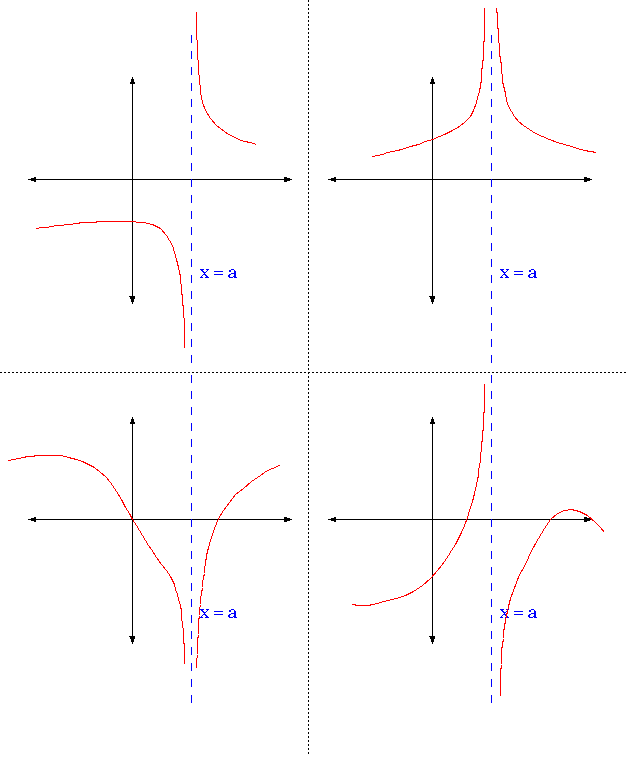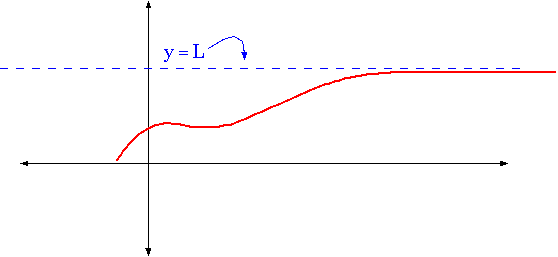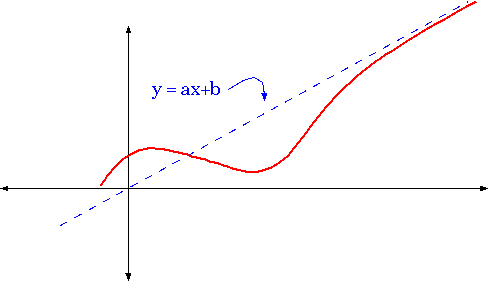On-line Math 21
On-line Math 21
4.5 Curve Sketching
Asymptotes: An asymptote is a line, vertical, horizontal,
or slanted, which the graph of the function approximates ``near infinity''.
This was already discussed somewhat back in <a href="../Unit1/limits-infinite.html»Chapter 1</a>,
when we were dealing with infinite limits.
More About Asymptotes
- A vertical asymptote is a vertical line x = a , where a
is a point at which the function has an infinite limit. If
then x = a is a vertical asymptote for the graph. This holds for one-sided
limits as well. Usually, but not always, vertical asymptotes are places where
the denominator of the expression for f(x) has value 0 . f(x) = lnx
also has a vertical asymptote at x = 0 .

- A horizontal asymptote is a horizontal line y = c , where
The limit could approach c at either +¥ -¥,
or both.

- A slant asymptote is a situation where the graph y = f(x) approaches
some other line as x® ¥ (or -¥). You can
see when this occurs by finding when there is some line y = mx+b for which
|
|
lim
x® ¥
|
( f(x)-(mx+b)) = 0. |
|

Roughly, you should look for situations where f(x) has an expression
which is linear except for terms of lower order, like
This function has a slant asymptote of y = x+1 , since
|
|
|
|
|
lim
x® ¥
|
|
x3+2x+3-(x+1)( x2-x+1)
x2-x+1
|
|
| |
|
|
|
lim
x® ¥
|
|
x3+2x+3-( x3+x2-x2-x+x+1)
x2-x+1
|
|
| |
|
| |
|
|
|
Copyright (c) 2000 by David L. Johnson.
File translated from
TEX
by
TTH,
version 2.61.
On 21 Dec 2000, 00:39.



